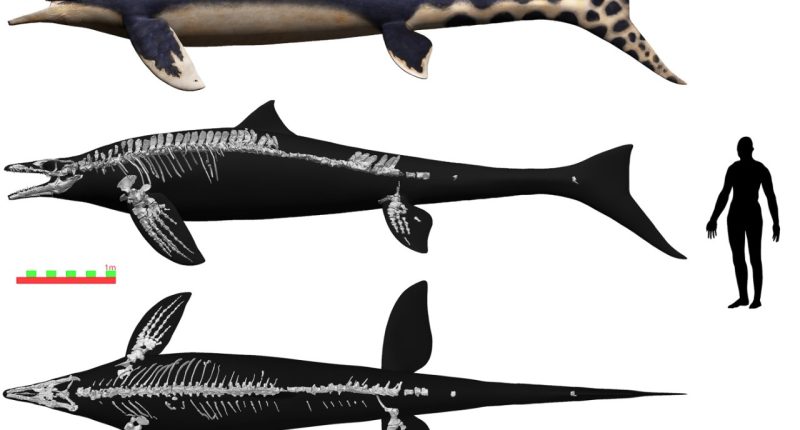A GIANT sea “dragon” stalked ancient prey across Earth’s oceans 72 million years ago.
The Japanese mosasaur was as big as a great white – and had killer traits that made it a “lethal hunter”, scientists say.
It was found in Japan’s Wakayama Prefecture and has been named the Wakayama Soryu – or “blue dragon”.
“In China, dragons make thunder and live in the sky. They became aquatic in Japanese mythology,” said Takuya Konishi, Associate Professor at the University of Cincinnati, who worked on the study.
Rare dragon
Unlike other mosasaurs, the Wakayama Soryu had a shark-like dorsal fin for fast and precise turns.
It also had extra-long rear flippers that may have helped with propulsion in ancient Pacific seas.
The remains of the “blue dragon” were found in Wakayama’s Aridagawa River.
And it’s the most complete skeleton of a mosasaur found in Japan and the northwestern Pacific to date.
“In this case, it was nearly the entire specimen, which was astounding,” Konishi said.
Its rear flippers are longer than its head, which is unique for a mosasaur.
Most read in News Tech
“I thought I knew them quite well by now,” Konishi said.
“Immediately it was something I had never seen before.”
Mosasaurs were apex predators that roamed the oceans between 100 million and 66 million years ago.
They lived at a similar time to Tyrannosaurus rex, and were wiped out by the mass extinction that killed off most dinosaurs.
Killer creature
One trait that helped the Wakayama Soryu so effective as a predator was its near-binocular vision, which scientists say made it a “lethal hunter”.
Scientists were also surprised by the paddle-shaped flippers, which may have been used to propel the creature through water.
This was described as “extraordinary” among not only mosasaurs but “virtually all other animals”.
“We lack any modern analog that has this kind of body morphology — from fish to penguins to sea turtles,” Konishi explained.
“None has four large flippers they use in conjunction with a tail fin.”
Scientists now think that the front fins were used for rapid manoeuvring, while the rear fins helped to dive or surface.
Read more on The Sun
And the tail would’ve allowed the mosasaur to accelerate at speed.
It took scientists five years to remove the sandstone from around the fossil after its discovery, with the research published in the Journal of Systematic Palaeontology.









